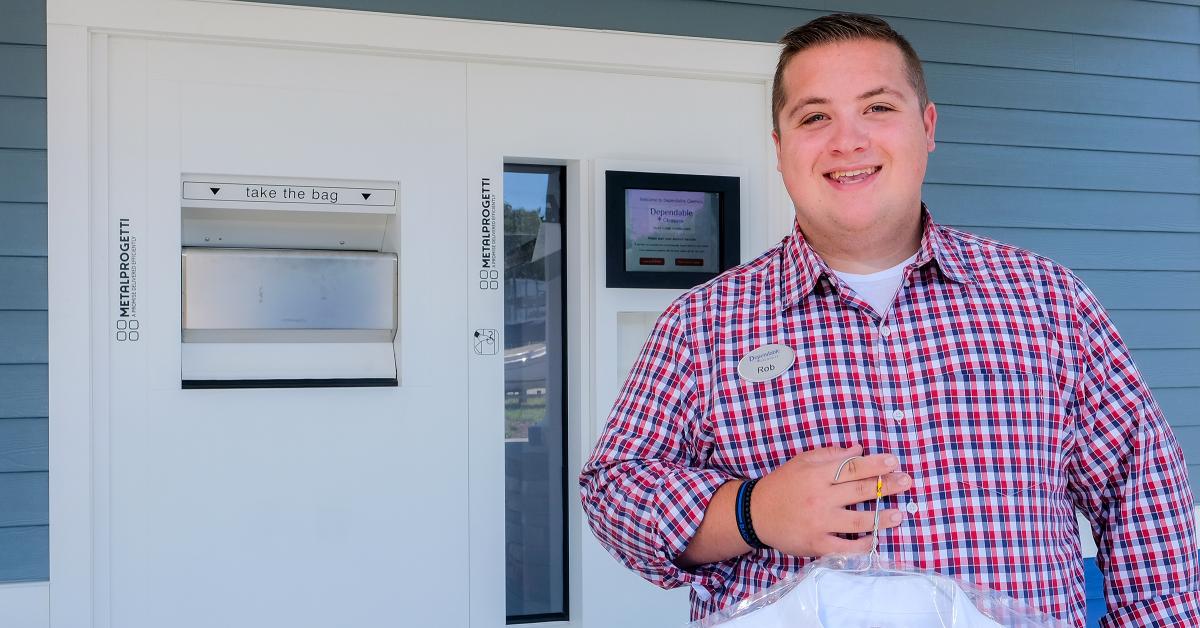CHICAGO — The dry cleaners who can offer the most service and convenience to their customers will have an advantage over those who refuse to adapt to their clients’ changing needs. To accomplish greater accessibility, many cleaners have turned to touchless technology.
In Part 1 of this series, we examined options that touchless technology can provide to dry cleaners, and in Part 2, we looked at how cleaner can integrate this new tool into their companies. Today, we’ll conclude our series by posing some questions dry cleaners should as themselves when considering incorporating touchless tech into their operations.
The Touchless Experience
When investing in new technology, business owners may think they know what to expect. Still, the experience often brings new things to light, and touchless technology is no different, says Matt Kool, owner and president of Iowa Techniques, a manufacturer of drop-box systems located in Hutto, Texas.
“I think that the biggest surprise is going to be that the frequency of the interaction per customer dropping off clothes is going to be more regulated and consistent,” he says. “The time that the customer comes in to pick up their clothes is going to be shortened, as well, because they’re picking up clothes and not dropping off and picking up. The per-order size might decrease, but that’s only because you’re able to service the customer on a more frequent basis.”
Brett McLeod, president of Garment Management Systems, a kiosk and automation producer based in Little Rock, Arkansas, says that, because a customer’s payment information is kept on file when using a kiosk, this can streamline a cleaner’s processes: “Getting their money upfront, instead of whenever the customer picks up, makes for a better cash flow. And cleaners have seen that customers are picking up their clothes quicker because they’ve already paid for it — another benefit to the cleaners.”
Touchless technology doesn’t allow for all things, but Carlyn Parker, director of operations of Dependable Cleaners in Boston, believes there are ways to work around these issues.
“You can’t put folded shirts or wash-dry-fold in the kiosk, so that’s one of the challenges,” she says, “but it seems to be a minimal problem. Our customers don’t seem to mind. They know when they bring in wash and fold, they’ll have to come into the store and get it. I’ve spoken to the store manager, and she says she doesn’t get any problems with it — customers just adapt to what is available.”
Is Touchless Right for You?
Businesses are as unique as the people who run them and the customers who use their services, and touchless might not be the right fit for every dry cleaner. Christopher White, executive director of the consultancy group America’s Best Cleaners (ABC), believes cleaners should look at their entire operation before making the decision.
“No one is saying that this is a silver bullet to solve all ailments or problems,” he says. “Each business in each market has its own unique challenges and opportunities — what works in one market may not work for others. You need to ask if it’s right for you and your brand and your market. Give it a gut check and don’t just go for the shiny new thing. It’s a substantial investment — not just in the equipment, but in the shift of what you’re offering to your customers and what kind of messaging you’re putting out there with your brand.”
For cleaners who do decide to invest in a touchless system, Steve Arnold, partner and general manager of Classic Cleaners, a 17-store chain in Indianapolis, advises them to get buy-in from their team before rolling it out to the customer.
“You have to get your employees to change their habits,” he says. “There is a difference between the stores whose employees have embraced it and those who don’t understand it. You have to have a training program that shows all the benefits, and make sure all the employees understand them so they can communicate those benefits to the customer.”
Parker believes this technology will find a permanent place in the drycleaning industry.
“People have gotten used to touchless,” she says. “I didn’t use Instacart at the beginning of the pandemic, and now I use it every week. It’s great because it’s one less thing I have to do. I believe that people will feel the same way about drycleaning and home-delivery kiosks. It just makes your life that much more convenient.
“I think touchless systems are here to stay. I think they’re going to grow, and I think there’ll be more players in the touchless industry that will change the market.”
For Part 1 of this series, click HERE. For Part 2, click HERE.
Have a question or comment? E-mail our editor Dave Davis at [email protected].

